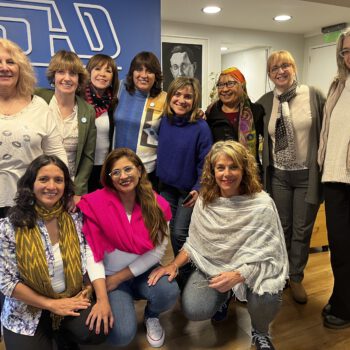Many struggle with the ups and downs of ADHD, myself included. As a clinician, I see issues with attention not as a simple neurological deficit, but as a dissociative response to stress. When the nervous system becomes overwhelmed, it seeks ways to cope, often by disconnecting from the present moment. This dissociation is not a defect, it is a survival mechanism. It is the body’s way of managing excessive stress energy, which moves upward and outward when we are dysregulated.
In contrast, a regulated nervous system allows us to stay connected to ourselves and the world around us. It provides a greater capacity to respond rather than react, offering more choices in how we navigate life. When we are present, we can process stress in a way that transforms it, rather than simply expelling or suppressing it. Presence turns stress into soil (ground), something we can digest and use as fuel for growth, rather than something that controls or overwhelms us.

Photo by Tara Winstead: https://www.pexels.com/photo/adhd-text-8378728/
Dissociation as a Response to Emotional Stressors
Dissociation occurs when our nervous system perceives a situation as too much to handle. When we experience overwhelming stress, our system instinctively seeks relief. One way it does this is by numbing or checking out, an upward and outward movement of energy that creates a sense of mental fog, distractibility, or hyperactivity. This is why people with attention issues often struggle with focus, organization, and sustained attention. The mind jumps from one thing to the next, not because of a lack of discipline, but because it is trying to escape something that feels unbearable.
The irony is that staying present is the very thing that could help integrate and resolve activation, yet it is also what feels the most intolerable. This is why stillness can feel excruciating for those who struggle with staying with the present moment. When we slow down and try to be present, we come into contact with all the stress, discomfort, and emotions we have been trying to avoid. Our restlessness and distractibility are not random; they are symptoms of a deeper struggle with regulation and safety.
Presence as the Key to Regulation
Regulation means having the ability to stay related to challenges without becoming overwhelmed. It is the capacity to experience unpleasant emotions without dissociating or shutting down. A well-regulated system does not eliminate triggers; rather, it transforms them into something we can engage with constructively. Just as composting turns waste into fertile soil, learning to regulate and be present to stressors turns this into a process that builds resilience.
But why do we resist presence so strongly? Becoming present means feeling everything, including the discomfort, the anxiety, and the unresolved emotions that our dissociative patterns have been shielding us from. It can be painful. For those with ADHD, being present can feel like suddenly realizing the house has been on fire for years. No wonder the impulse is to keep moving, keep distracting, keep checking out.
A freezer’s job is to freeze…but who pays the energy bill? The cost of dissociation is that our life force becomes locked up. Unprocessed emotions get stored in the body, freezing parts of us in time. Over time, this frozen energy builds up, manifesting as chronic restlessness, hyperactivity, mental fog, or even physical symptoms. The problem is not that people with ADHD are inherently inattentive or disorganized; the problem is that their nervous systems are carrying the burden of many unmetabolized emotions.
Learning to Stay Present
So how do we unfreeze? How do we learn to stay present when presence itself feels unbearable? I help my clients understand that the answer lies in titration: taking it step by step, allowing ourselves to meet our emotions in small, manageable doses.
Regulation does not mean forcing ourselves into stillness all at once. That would be like throwing someone who can’t swim into deep water and expecting them to stay afloat. Instead, we need to build our capacity gradually. This means developing the ability to be present in small moments, perhaps through mindful breathing, grounding exercises, or body awareness practices.
As we titrate our way into presence, we begin to free up the life energy that has been locked away under stress. Each moment of regulation creates a little more space, a little more flexibility. Over time, this builds resilience, the ability to stay engaged with life, rather than escaping from it.
The Gift of Regulation
ADHD, in this view, is not a disorder to be fixed, but a pattern of dissociation that can be understood and transformed. The mind’s distractibility is not a flaw, but a sign that the nervous system is seeking relief. By learning to regulate rather than dissociate, we do not lose our capacity for movement and energy, we gain the ability to direct it in a way that serves us.
Presence is not about forcing ourselves into stillness but about creating a deeper relationship with ourselves and our experience. Learning to stay with our present-moment experience, involves feeling our way into our emotions, relating to them as not something to escape from, relating to them as our teachers, informers of what is there for us in real time. We begin to meet them with awareness, learning to relate to them as a source of power, growth, and creativity.
With this understanding, I have more compassion for my attention issues. I encourage my clients to move away from viewing distractibility as a defect, as something that needs to be suppressed or medicated away. Instead we explore reclaiming our ability to engage with life from a place of depth, resilience, and choice.



